
Adenium Plant Guide
You must have seen Adenium and been amazed at its vivid blossoms, which bloom on short stems in red, pink, and deep purple. Do you wish to grow them indoors but are unsure how to care for them? Be at ease! We've got your back.
Even though the plant doesn't need constant supervision, there are some aspects of adenium bonsai plant care to be aware of.
Plant Overview
The Adenium obesum, or desert rose, has a swollen, woody stem that supports abundant flowers with vivid pink, coral, and red hues. Northern Africa and the Arabian Peninsula are home to various species of the desert rose plant.
The desert rose plant is known by different names, including Impala Lily, Mock Azalea, Sabi Star, and Dwarf Bottle Tree, much like the cultural diversity of its native region.
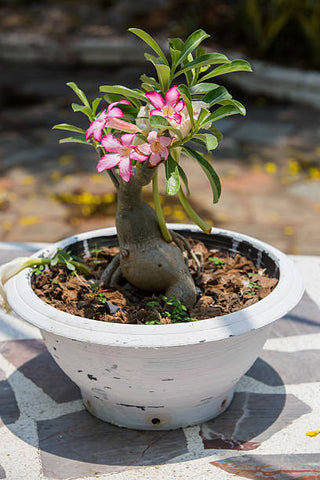
The Adenium obesum is a must-have if the Arabian Peninsula has likewise captured your attention the way it has ours! The adenium bush's stem is robust and has succulent branches. Adenium plants have oval-shaped leaves.
Symbolism:
This plant or flower is associated with wealth. The bulging basal stem of the desert rose is regarded as a sacred sign of fertility, prosperity, abundance, and good fortune, much like the Laughing Buddha's protruding belly is. The desert rose is a beneficial flower for every residence according to feng shui rules.
The desert rose plant represents toughness, perseverance, and tenacity because it is resilient and tolerant of difficult environmental circumstances.
Botanical name: Adenium obesum
The common name: Desert rose, Sabi star, mock azalea, impala lily
Plant type: Succulent
Family: Apocynaceae
The care required for this sun-loving plant to flourish properly adds to its attractiveness.
There is no way to go wrong cultivating these magnificent succulents as long as the proper temperature is maintained!
Types
This little plant has a twisted trunk and vivid crimson blossoms. Adenium Single Layer Red Flower Plant is a preferred option for collectors due to its unique shape.
Another short one bears unusual, velvety-textured white flowers with bright pink borders. Due to its lovely beauty, collectors frequently choose it.
The baby pink desert rose adenium is a lovely plant. These shrubs feature fleshy branches and stout stems. Their foliage typically has an oval form, ranges from 2 to 7 inches, and is available in white and baby pink shades.
-
Adenium multiflorum
This particular species of desert rose is distinguished by its modest stature and profusion of blossoms. It produces clusters of reddish-pink borders on white blooms.
The desert rose flowering shrub looks great in containers or as a landscape accent. These flowers are prized for their opulent presentation and exquisite bicolour blooms in shades of pink and white for your indoor environment.
-
Adenium Obesum Double Black Steel.
It is a stunning plant with flowers that range from rich, velvety red to dark purplish and have a distinctive black centre. Its lush green leaves and flowers go together well.
The succulent Adenium Obesum Pink Single Petal has 2 to 3-inch blossoms. This potted specimen stands out due to the variety of colours and trumpet shapes. It is simple to grow and an excellent option for a daring gardener.
Care
Learning how to care for them is crucial if this is persuading you to buy this great houseplant.
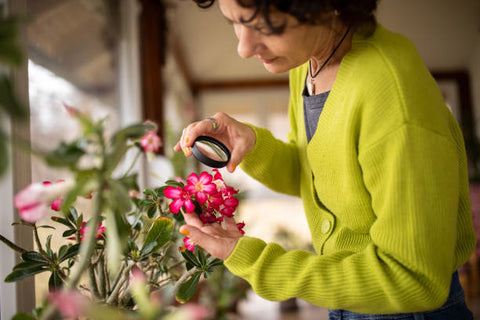
The following advice will help you take good care of your exquisite desert rose:
Light
The desert rose flowering plant thrives in arid climates and blossoms magnificently in strong, direct sunlight. They may not flower as heavily but thrive in bright morning or afternoon sun. These plants grow lanky and weak-stemmed if kept in the shade.
Note:
If the leaves on your desert rose begin to turn yellow regularly, it may be a sign that the plant is suffering from too much heat or sun. Care for an adenium plant necessitates removing it from the light source or moving it to a sunny location with afternoon shade.
Water
Depending on the season and temperature, the desert rose plant has different water needs. Maintain its soil at a constant moisture level during its growing season (late spring and summer). Check the soil's condition frequently, and wait until it is dry before watering. Place your desert rose in a container with drainage holes. A clay or terra cotta container can also aid in wicking away extra moisture since the desert rose can be vulnerable to rot if it becomes too wet.
Reduce moisture substantially and water the plant sparingly once a month or so in the autumn and winter (when it generally goes dormant in the wild).
Temperature
Keep your plant in a warm spot because it will quickly perish if exposed to sustained temperatures below 50 degrees Fahrenheit. Temperatures between 65 and 90 degrees Fahrenheit are ideal for its growth. Your desert rose won't likely survive any severe freeze.
Fertiliser
It is a good idea to give your plants a light feeding of slow-release fertiliser or liquid fertiliser now and then during the growing season. You can offer a diluted feeding once every two weeks in the spring. Reduce this to once a month in the summer. Stop feeding the plant as the weather becomes cooler to allow it to prepare for the winter.
Pruning
Your plant will stay young, vigorous, and well-groomed with frequent pruning.
Pinch back or clip unkempt growth during the growing season. Pruning back extra growth can help the plant benefit more from its rest period before bringing it inside for the winter. A smaller, more compact plant will also be simpler to maintain indoors throughout the winter. Remove any damaged or dead plants. To make the plant more symmetrical, trim back stray branches. These branches can be used as cuttings to grow new plants.
Repotting
Young Adeniums should be replanted in the spring, while adult plants should only if required. Every two to three years, in late spring, repot the plants with roots pruned.

A well-draining soil mixture is necessary since too much moisture will kill the Desert Rose. As with other succulents, let the adenium plant's soil somewhat dry up before repotting it and wait a few days before watering it again.
Toxicity
The adenium plant, commonly known as the desert rose, is poisonous to children and pests, as was already noted. After handling adenium, cleanse your hands thoroughly with soap and water since it contains a harmful sap. The blossoms should be in a location that is out of reach for kids and animals.
Adenium can poison both cats and dogs, so you must use caution. Make sure your pets are out of the way of the adenium plants. It may result in nausea, vomiting, and fatigue. If your pet exhibits any poisoning symptoms, take them to the clinic.
Blossom
Depending on the growing conditions, the desert rose plant will begin to blossom in seven to eight months. Make sure your plant receives at least six hours of sunlight each day, and during the spring and summer, fertilise at least once a month to promote blooming. Your plant may be devoting more work to growing new roots than blossoms if it has recently potted. Allow it some time to become used to its growing conditions.
Propagation
Beautiful adenium plants can be grown from seeds and branch cuttings. It's possible that the new plant won't have the same bulbous trunk as the original if you propagate it from a branch cutting rather than a seed.
Things you will need before starting:
- A clean container, a planting mix, disinfected pruners, and gardening gloves
The procedures for growing a stem cutting are as follows:
- Put on gardening gloves because this plant's sap is lethal. Cut a branch's tip-off by 5 to 6 inches.
- Allow the cutting to dry for one or two days.
- After being wet, dip the cut end in the rooting hormone.
- Daily water the cuttings, but make sure the water drains from the soil. Within two to six weeks, the cutting ought to start to grow.
- After six weeks, you ought to see new growth, or the stem ought to feel firmly planted in place if you gently tug on it.
Common Issues With Desert Rose
The desert rose is a plant free of pests and diseases. Overwatering is the main issue this plant is facing. A plant's natural defences are when growing conditions are unfavourable, which allows pests or diseases to spread.
Yellowing or Dropping Leaves
Yellowing leaves or an unexpected loss of foliage are typical indications of root rot. Root rot caused by a fungus infection can save your plant if you discover it in time. If you spot any soggy, charred roots, trim them off with a sharp knife. Sterilise the knife in between cuts. Follow the directions on the fungicide's packaging before applying it.
Spots on the Leaves
On the upper leaf surfaces, powdery mildew forms markings that resemble blisters. Upon the leaves, stems, and buds, it may cause deformed growth and a material that resembles white powder. Water does not like powdery mildew. Following the directions on the package, mist the plant's leaves and apply a fungicide. When stems and branches start to clump up, prune.
Lower Leaves Speckling
The most frequent insect that harms desert rose plants is spider mites. They obtain their nutrition by sucking sap from the underside of leaves. Leaf speckling causes total discolouration, which then results in leaf death. Shake the affected leaves over a sheet of white paper to find spider mites; they appear as tiny dots. For mite management, you can also use neem oil or insecticidal soap. Apply it liberally to all the bottom surfaces, including the undersides of the leaves.
FAQ's
Why isn't my Adenium blooming?
Your desert rose plant might not bloom this season if you recently potted it again because it focuses on developing roots rather than blossoms. A plant will not flower if it does not receive enough bright sunlight. Not only will the plant stop blooming if left to stand in wet soil or water, but poorly drained soil can also quickly cause the plant to rot and perish.
Is desert rose a real rose or a bonsai?
Adenium obesum is neither a rose nor a bonsai, despite its name. It is a deciduous plant, in actuality. Adenium obesum has a vast gene pool with numerous variants and subspecies in the wild and five distinct varieties to grow. These variants could originate from the environment of the plant, say scientists.
How can I speed up the growth of my Adenium arabicum?
Adenium arabicum grows more quickly when there is enough light available. The plants need light to produce their sustenance.
What makes a desert rose unique?
Many people adore the Desert Rose (Adenium obesum), which is native to Southern Arabia and Eastern Africa and has unusually enlarged stems and colourful petals. Chinese people the name "flower of wealth" because they thought it brought luck, or the swelling base of the stem, symbolised fecundity.
With minimal maintenance, the desert rose is a lovely little tree that will bring you years of happiness. We've talked about how to take care of adenium plants. Keep your Adenium bonsai plant in full sunlight during the spring and summer, water it sparingly, fertilise it sparingly, and move it indoors when the weather turns chilly for optimum care. It's as simple as they come.
Why wait any longer? Check out our incredible collection of adenium plants.
Adenium Plants collection
-
Original price Rs. 499.00 - Original price Rs. 499.00Original priceRs. 499.00Rs. 499.00 - Rs. 499.00Current price Rs. 499.00
Prosperity Pink Adenium Single Layer Pink Flower Plant
Product Name: Prosperity Pink Adenium Single Layer Pink Flower Plant Note: This Plant would come in a Terracotta (Black) Color Plastic Pot. We Del...
View full detailsOriginal price Rs. 499.00 - Original price Rs. 499.00Original priceRs. 499.00Rs. 499.00 - Rs. 499.00Current price Rs. 499.00 -
Original price Rs. 699.00 - Original price Rs. 699.00Original priceRs. 699.00Rs. 699.00 - Rs. 699.00Current price Rs. 699.00
DL 24 Adenium Double Layer Rose Flower Plant
Product Name: DL 24 Adenium Double Layer Rose Flower Plant Note: This Plant would come in a Terracotta (Black) Color Plastic Pot. We Deliver this ...
View full detailsOriginal price Rs. 699.00 - Original price Rs. 699.00Original priceRs. 699.00Rs. 699.00 - Rs. 699.00Current price Rs. 699.00 -
Original price Rs. 599.00 - Original price Rs. 599.00Original priceRs. 599.00Rs. 599.00 - Rs. 599.00Current price Rs. 599.00
Red Doxon Adenium Single Layer Red Flower Plant
Product Name: Red Doxon Adenium Single Layer Red Flower Plant Note: This Plant would come in a Terracotta (Black) Color Plastic Pot. We Deliver th...
View full detailsOriginal price Rs. 599.00 - Original price Rs. 599.00Original priceRs. 599.00Rs. 599.00 - Rs. 599.00Current price Rs. 599.00 -
Original price Rs. 699.00 - Original price Rs. 699.00Original priceRs. 699.00Rs. 699.00 - Rs. 699.00Current price Rs. 699.00
936 Adenium Double Layer Dark Red Flower Plant
Product Name: 936 Adenium Double Layer Dark Red Flower Plant Note: This Plant would come in a Terracotta (Black) Color Plastic Pot. We Deliver thi...
View full detailsOriginal price Rs. 699.00 - Original price Rs. 699.00Original priceRs. 699.00Rs. 699.00 - Rs. 699.00Current price Rs. 699.00 -
Original price Rs. 599.00 - Original price Rs. 599.00Original priceRs. 599.00Rs. 599.00 - Rs. 599.00Current price Rs. 599.00
Adenium Single Layer Dark Pink Flower Plant
Out of stockProduct Name: Adenium Single Layer Dark Pink Flower Plant Note: This Plant would come in a Terracotta (Black) Color Plastic Pot. We Deliver this P...
View full detailsOriginal price Rs. 599.00 - Original price Rs. 599.00Original priceRs. 599.00Rs. 599.00 - Rs. 599.00Current price Rs. 599.00Sold out

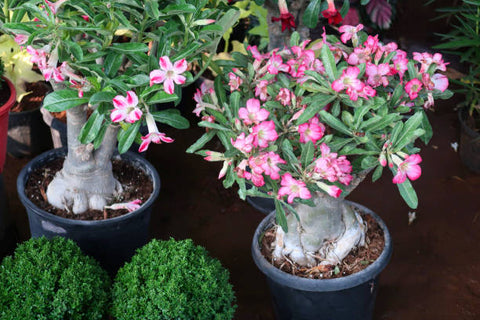

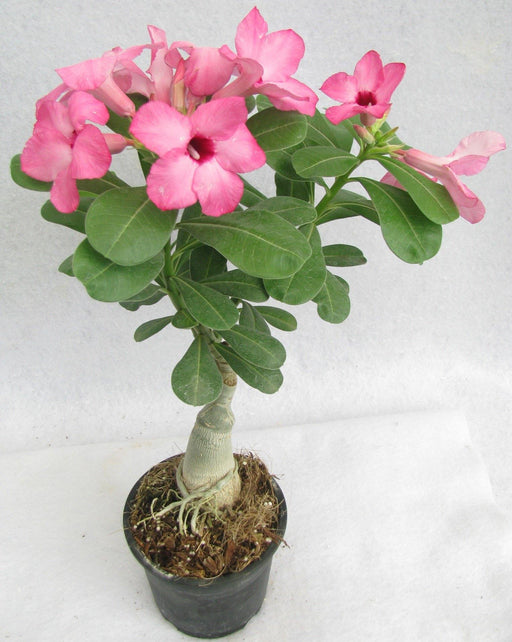
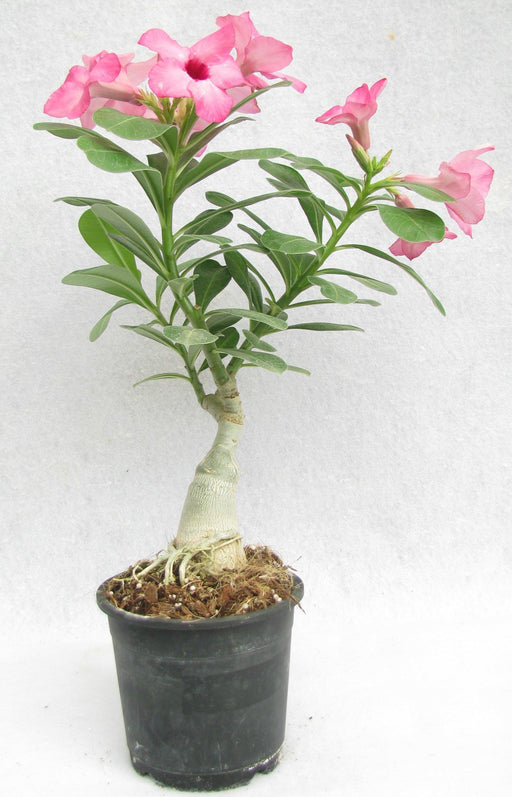
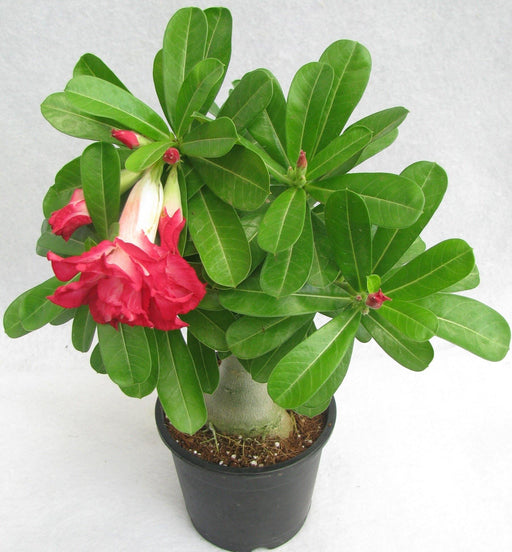
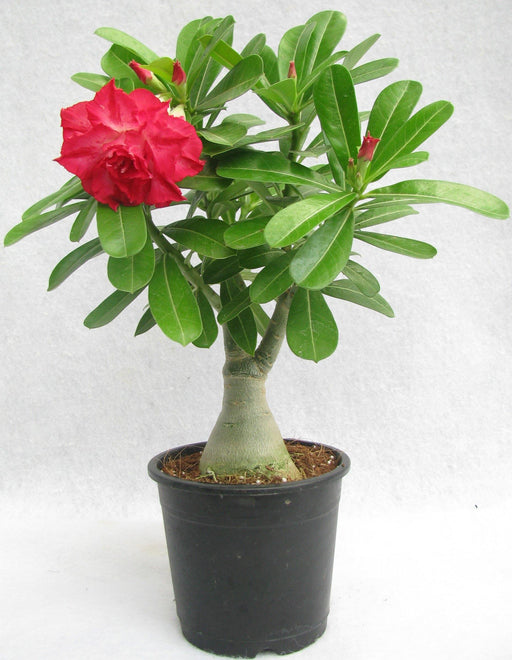
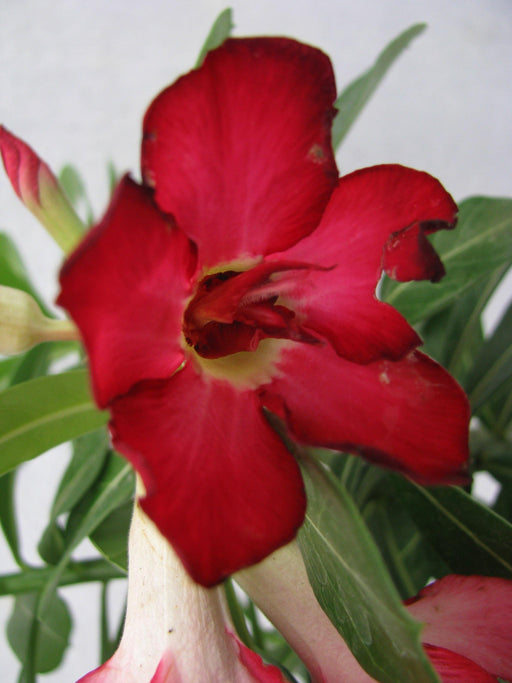
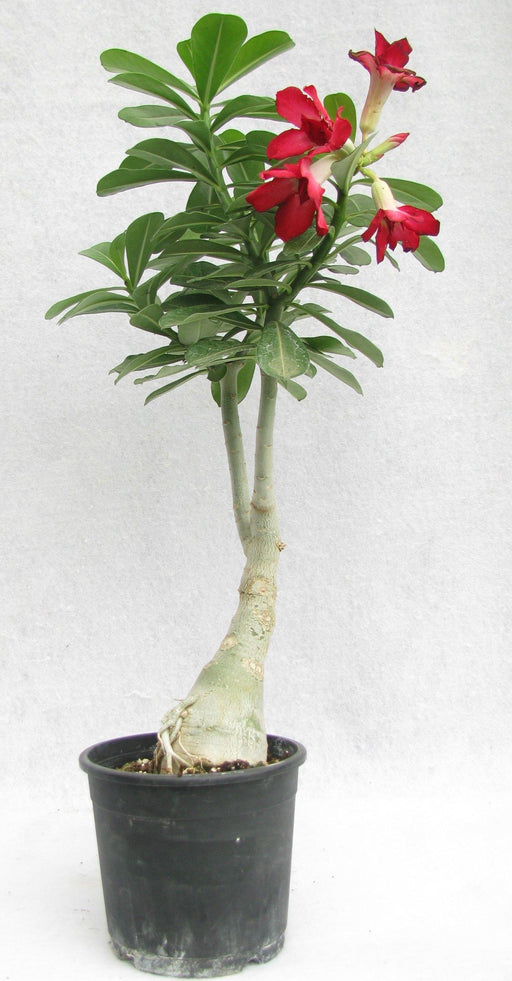
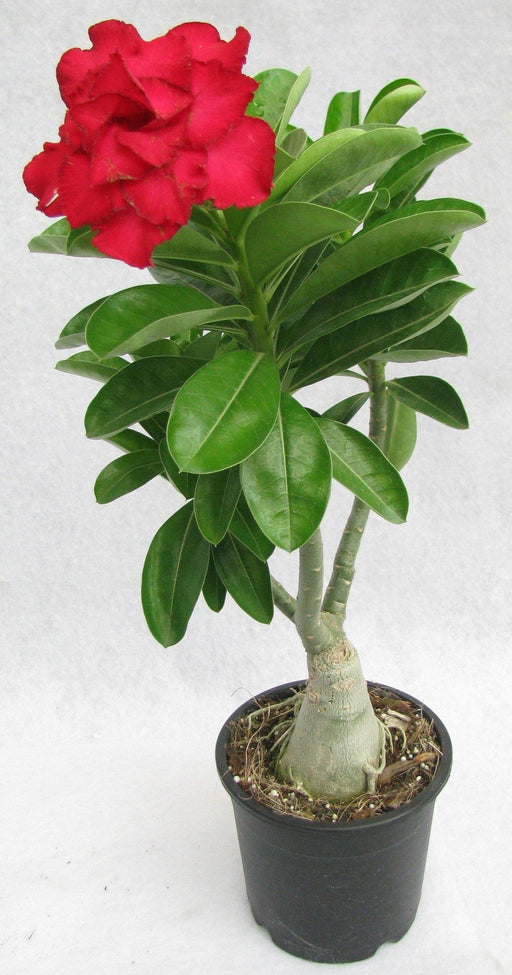
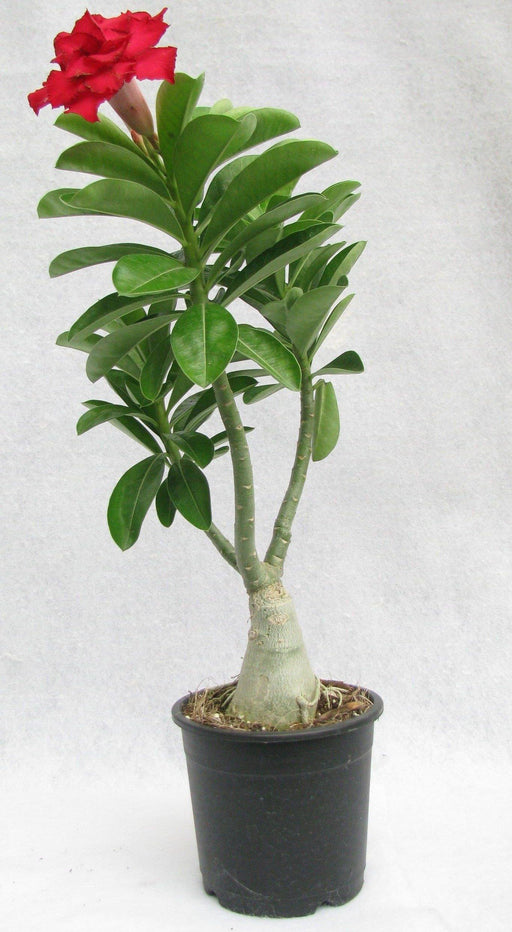
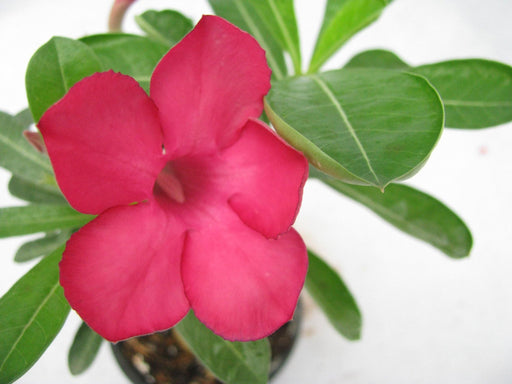
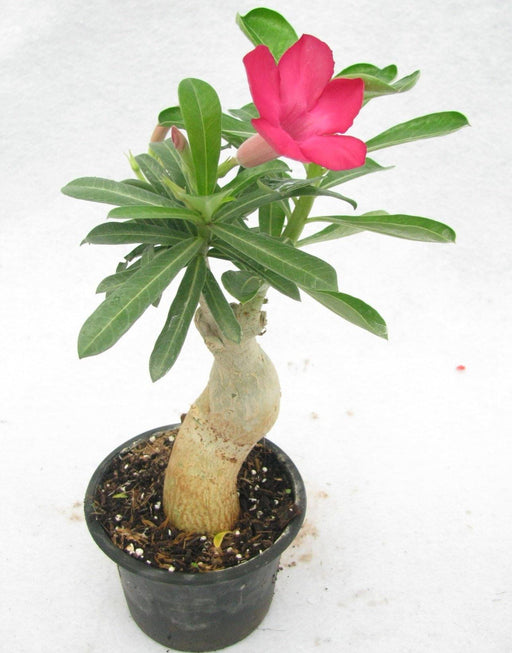
Comments
Leave a comment